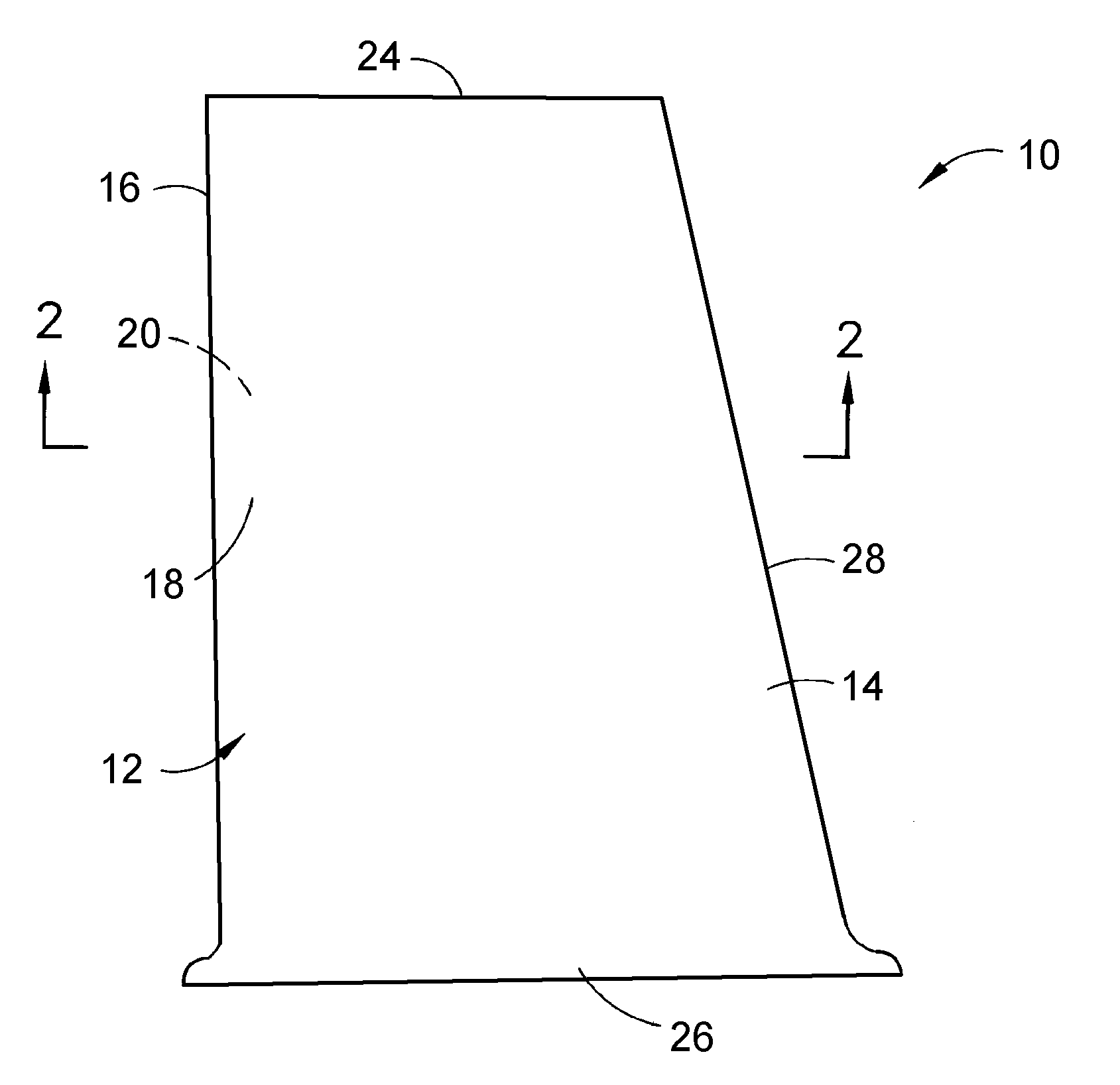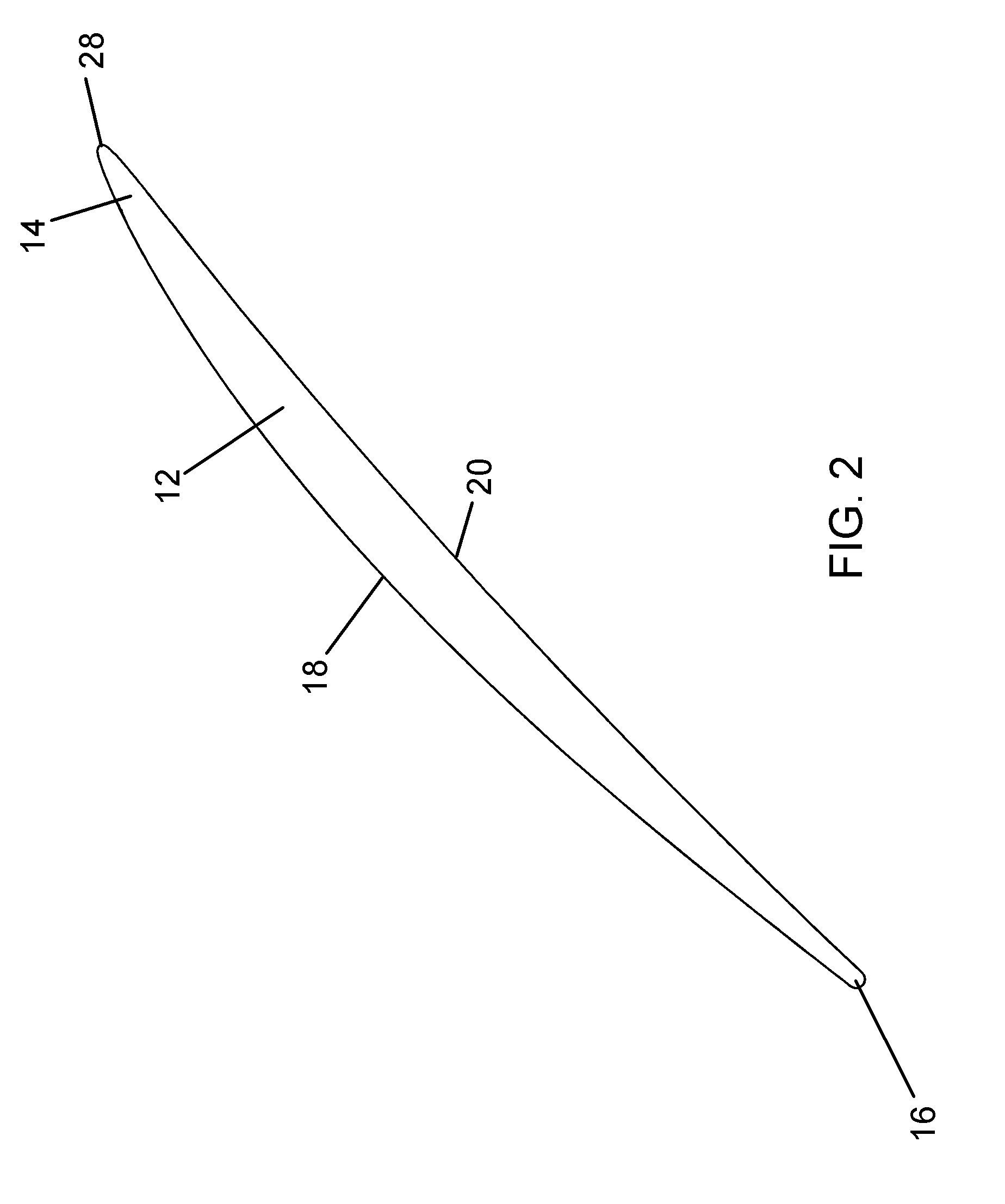Airfoil and process for depositing an erosion-resistant coating on the airfoil
a technology of airfoil and airfoil layer, which is applied in the direction of chemical vapor deposition coating, climate sustainability, machines/engines, etc., can solve the problems of reducing the fuel efficiency of the engine, reducing the efficiency of the compressor, and prone to ingesting significant amounts of particulates
- Summary
- Abstract
- Description
- Claims
- Application Information
AI Technical Summary
Benefits of technology
Problems solved by technology
Method used
Image
Examples
Embodiment Construction
[0029]As previously described, FIGS. 1 and 2 represent the airfoil 12 of a gas turbine engine compressor blade 10. The present invention is particularly well suited for compressor blades of aircraft gas turbine engines, but is applicable to airfoil components used in other applications.
[0030]The blade 10 is formed of a material that can be formed to the desired shape and withstand the necessary operating loads at the intended operating temperatures of the gas turbine compressor in which the blades will be installed. Examples of such materials include metal alloys that include, but are not limited to, titanium-, aluminum-, cobalt-, nickel-, and steel-based alloys. When the blade 10 is installed in the compressor section of a gas turbine engine, the convex (suction) and concave (pressure) surfaces 18 and 20 of the blade 10 define what will be termed herein flowpath surfaces, in that they are directly exposed to the air drawn through the engine. The flowpath surfaces of the blade 10 ar...
PUM
| Property | Measurement | Unit |
|---|---|---|
| thickness | aaaaa | aaaaa |
| thickness | aaaaa | aaaaa |
| thickness | aaaaa | aaaaa |
Abstract
Description
Claims
Application Information
 Login to View More
Login to View More - R&D
- Intellectual Property
- Life Sciences
- Materials
- Tech Scout
- Unparalleled Data Quality
- Higher Quality Content
- 60% Fewer Hallucinations
Browse by: Latest US Patents, China's latest patents, Technical Efficacy Thesaurus, Application Domain, Technology Topic, Popular Technical Reports.
© 2025 PatSnap. All rights reserved.Legal|Privacy policy|Modern Slavery Act Transparency Statement|Sitemap|About US| Contact US: help@patsnap.com



